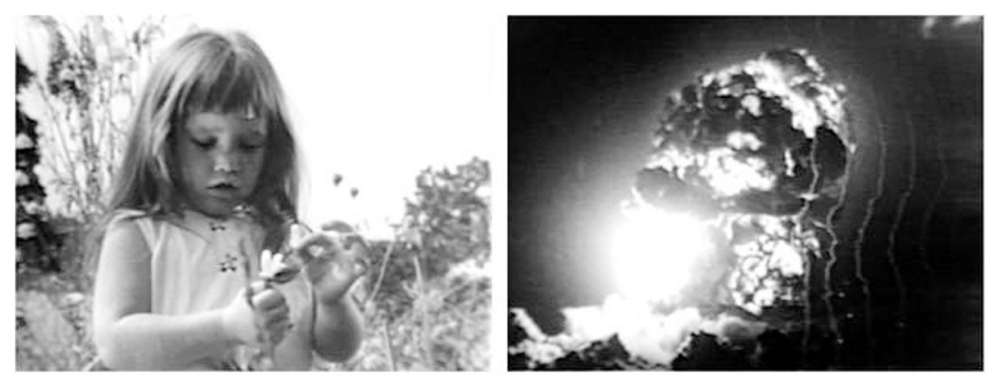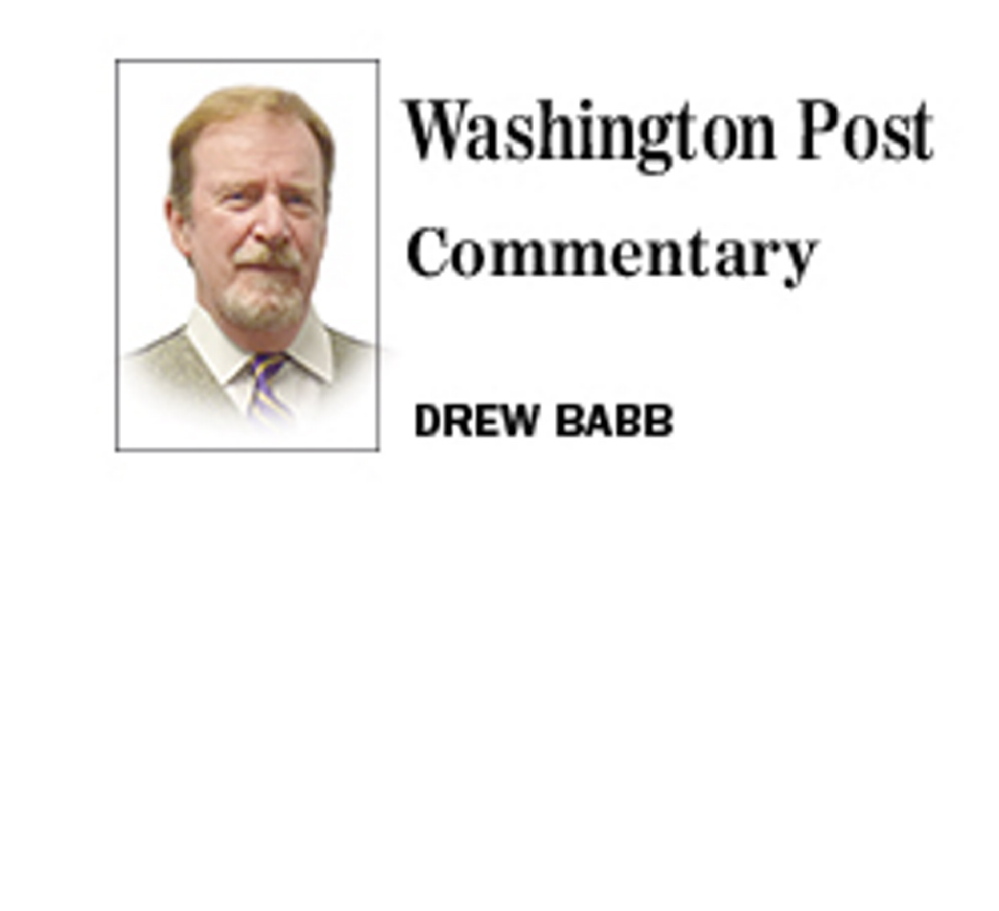Fifty years ago, on Sept. 7, 1964, a political ad called “Daisy” aired on behalf of President Lyndon Johnson. The commercial opened with a little girl in a meadow, then a horrific nuclear blast filled the screen. We’ve been feeling the fallout ever since.
It was only a minute long. The paid ad ran on national television only once, and only on one network, NBC. But that’s all it took.
The message
Here’s what you would have heard that early fall evening during “Monday Night at the Movies”:
Little Girl (plucking daisy petals): One, two, three, four, five, seven, six, six, eight, nine . . .
“Mission Control”: Ten, nine, eight, seven, six, five, four, three, two, one, zero . . .
Sound Effects: Huge atomic bomb blast.
President Johnson: These are the stakes: to make a world in which all of God’s children can live, or to go into the dark. We must either love each other. Or we must die.
Announcer: Vote for President Johnson on Nov. 3. The stakes are too high for you to stay home.
The takeaway? Johnson’s Republican opponent, Barry Goldwater, was a crazed, trigger-happy cowboy. If his finger were ever on the nuclear button, the world would blow up. We’d all die.
The fallout
You can love “Daisy” for its power or hate it for its excess — I both love it and hate it — but it changed political advertising forever. Here’s how:
It gave politicians a license to kill. Earlier political commercials were overwhelmingly upbeat. In 1960, Frank Sinatra sang a rewrite of “High Hopes” for John F. Kennedy, with this jolly lyric: “Everyone is voting for Jack, ’cause he’s got what all the rest lack.”
But “Daisy” was a full-throated, gloves-off, take-no-prisoners negative message. Arguably, and for better or worse, it’s the Mother of All Attack Ads.
To execute the spot, the creative types didn’t just run still photos with a crawl of type. They used every weapon in their arsenal. They grabbed for viewers’ hearts with an adorable little girl (commercial actress Monique Corzilius). They tapped into viewers’ greatest nightmare with footage of a huge mushroom-shaped cloud. (Remember, this was less than two years after the Cuban missile crisis.) They reinforced the visuals with intrusive sound effects (provided by the genius sound engineer Tony Schwartz). They had Johnson read a snippet of spiritual poetry (by W.H. Auden). And they hired a voice-of-God baritone (sports announcer Chris Schenkel) to wrap things up.
By all means, trash the tropes. Nowhere in “Daisy” does an image appear of either candidate. Barry Goldwater is not mentioned. There are no American flags, bunting, stirring music or other cliches of the genre. Johnson’s ad agency, Doyle Dane Bernbach, deployed every bit of the imagery and verbal power typically used with nonpolitical clients such as Volkswagen, Avis Car Rental and Levy’s Rye Bread. DDB wasn’t going to pussyfoot around for the LBJ brand just because this was politics. The agency had its share of gentlemen and ladies, but when it came to gaining market share for its clients, they were New York street brawlers.
Overreacting can boomerang. Before there was something called “earned media,” “Daisy” did just that. The Republican campaign erupted in outrage. The Johnson campaign, which anticipated the heat, quietly and quickly pulled the ad, and it never ran again. But the networks (only three of ’em, remember?) duly registered the GOP ire and — to show people what all the fuss was about — ran “Daisy” ad nauseam. Result: The one-time-only spot was shown over and over. And under the aegis of newscasts, it undoubtedly picked up credibility along the way.
The credits
So who crafted and produced this message? Who’s responsible for it?
Tony Schwartz is often given sole credit. But commercials are like little movies. They’re collaborative. The collaborators include Bill Bernbach, DDB’s creative director; Sid Myers and Stanley Lee, art director and copywriter, respectively; and producer Aaron Ehrlich. On the account management side, Jim Graham was the point person.
But a creative agency always needs a creative client, so you have to give a nod to the White House, too. Steve Smith was the “matchmaker” who had recommended the upstart agency to his brother-in-law John F. Kennedy. Bill Moyers, Jack Valenti and Richard Goodwin seem to have been on the receiving end of the pitch. Lyndon Johnson, ultimately, approved the ad.
The reverberations
We’re on the cusp of another expensive, nasty election. Gird up your loins, everyone.
Many of 2014’s candidates and their brilliant operatives weren’t alive when “Daisy” aired. But what they do and what they’ll produce will be influenced by those 60 seconds that ran 50 years ago.
Happy birthday, “Daisy.”
Drew Babb teaches political advertising at American University and is president of the advertising consultancy Drew Babb & Associates. This column was distributed by The Washington Post, where it first appeared.

The most famous of all campaign commercials, known as the “Daisy Girl” ad, ran only once as a paid advertisement, during an NBC broadcast of Monday Night at the Movies on Sept. 7, 1964. The first of its kind, “Daisy” can be considered the Mother of All Attack Ads.
Send questions/comments to the editors.




Success. Please wait for the page to reload. If the page does not reload within 5 seconds, please refresh the page.
Enter your email and password to access comments.
Hi, to comment on stories you must . This profile is in addition to your subscription and website login.
Already have a commenting profile? .
Invalid username/password.
Please check your email to confirm and complete your registration.
Only subscribers are eligible to post comments. Please subscribe or login first for digital access. Here’s why.
Use the form below to reset your password. When you've submitted your account email, we will send an email with a reset code.